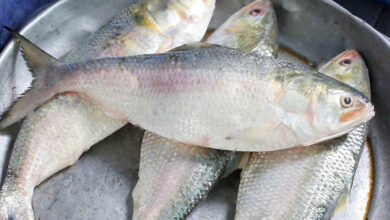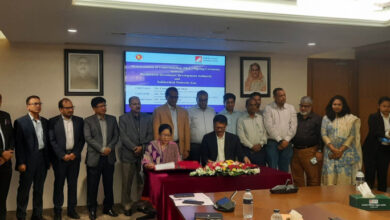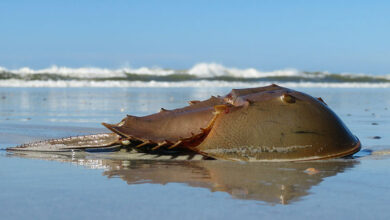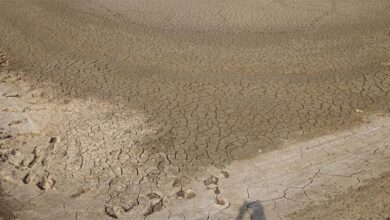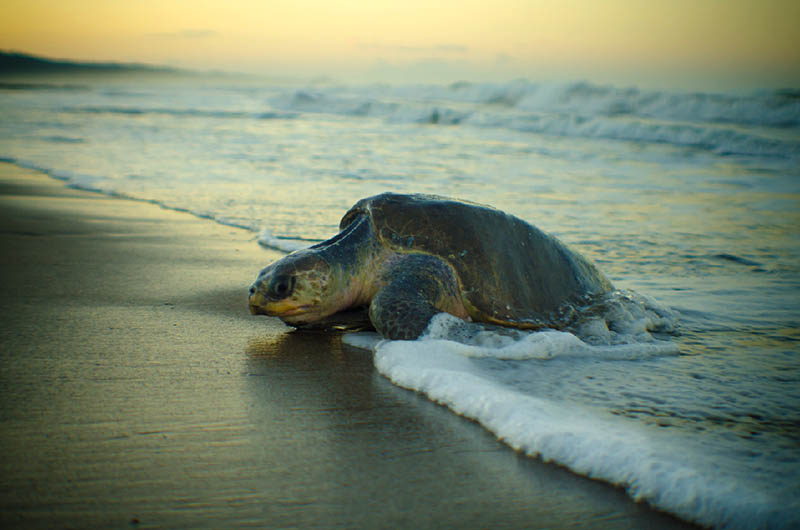
The Olive Ridley sea turtles, known for their remarkable ability to return to their birthplace to lay eggs, face a serious threat when they return to the coasts of Bangladesh’s Cox’s Bazar.
Turtles are regarded as ecosystem engineers due to their environmental significance. Turtles not only preserve their own living habitat by natural or behavioral engineering, but they also provide a favorable environment for other creatures.
Furthermore, sea turtles are valued as an important component of a healthy ocean.
While they spend the bulk of their life at sea, they have a distinctive nesting habit known as Arribada during the mating season. This word, which means “arrival by sea” in Spanish, refers to a phenomenon in which hundreds of mother turtles return to their nesting beaches to lay eggs.
However, the growing expansion of human activity on nesting beaches, as well as the deterioration of the maritime environment, have increased the threats these turtles confront, jeopardizing their existence and that of the entire marine ecosystem.
The situation is no different in Bangladesh. Olive Ridley turtles, which were formerly common sight on the country’s coastal beaches, are becoming increasingly rare.
The grimness of the situation became apparent in the first two months of 2024.
95 dead Olive Ridley turtles were found strewn across different parts of the beach by researchers from the Bangladesh Oceanographic Research Institute (BORI) between January and February 27.
In various areas of the shoreline, since February 25, ten turtles have been discovered dead. These include two at Bailyakhali Beach and Motherbunia, and one each at Daryanagar Parasailing Point, Royal Tulip Beach, Baradailpara, and Hazampara Teknaf Beach. Two days earlier, on February 23, 24 more dead turtles were found.
But why are so many turtles dying on the coast of Cox’s Bazar?
“The only possibility is that fishing activities drown the turtles in their nets, where they get suffocated and die,” said Dr. Saif Mohammed Al Ghais, General Director, Environment Protection & Development Authority, Government of Ras Al Khaimah, UAE.
Preliminary evaluations also demonstrate that the Olive Ridley turtles died as a result of entrapment in leftover fishing nets, sometimes known as ghost nets. Many turtles with injuries, such as those from ropes, sharp objects, and severed flippers, die at sea owing to their inability to swim.
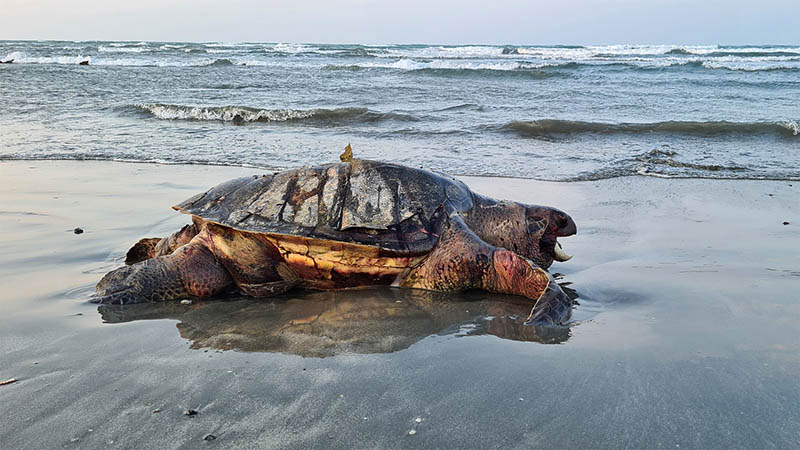
A mother turtle weighing 30-35 kg typically lays around 110 eggs. During the initial investigation, eggs were discovered in the stomachs of nearly all of the dead turtles. Most of them are thought to get wounded and die while traveling to the shore to lay their eggs.
Over the last 15 years, the dangerous environment has resulted in a considerable fall in the number of mother turtles making their way to the beach, resulting in a decrease in the number of eggs laid.
Tariqul Islam, a senior scientific officer at BORI, noted that the physical qualities of Olive Ridley sea turtles, notably the size of their flippers, usually keep them from becoming caught in the smaller fishing nets commonly employed along the coast.
He believes that larger gill nets, which are commonly employed by fishing trawlers, represent a greater threat to these turtles.
Many trawlers operate closer to the beach, frequently crossing their allocated fishing areas. This approach most likely results in the inadvertent capture of coastal turtles and other marine species in their nets.
Furthermore, fishing trawlers captured turtles since the majority of their fishing gear lacked turtle-excluding devices.
“Despite restrictions requiring these trawlers to operate inside authorized deep-sea zones, many wander closer to the coast, increasing the chance of unintentionally catching marine species, including turtles,” said Tariqul Islam.
Assistant Prof. Najmus Sakib Khan from the Department of Oceanography, Noakhali Science and Technology University, underscored the need for conservative measures to protect the turtles.
“The unplanned tourism industry is disrupting the nesting environment of sea turtles. To save sea turtles, it is necessary to identify their nesting sites and take conservation measures as soon as possible. Establishing a sea turtle research center is essential. There is a need to organize workshops on sea turtle conservation with local people and engage them directly in conservative measures. With these steps we can hope to increase our commitment to conserve these Mysterious Marine Navigators,” he said.
However, experts have expressed concern over the widespread mortality of turtles and have stated that more research is necessary. It is also vitally important to educate fishermen about the proper usage of ropes and fishing nets in the Bay.
Jaber Bin Abdul Bari
Department of Oceanography, NSTU

